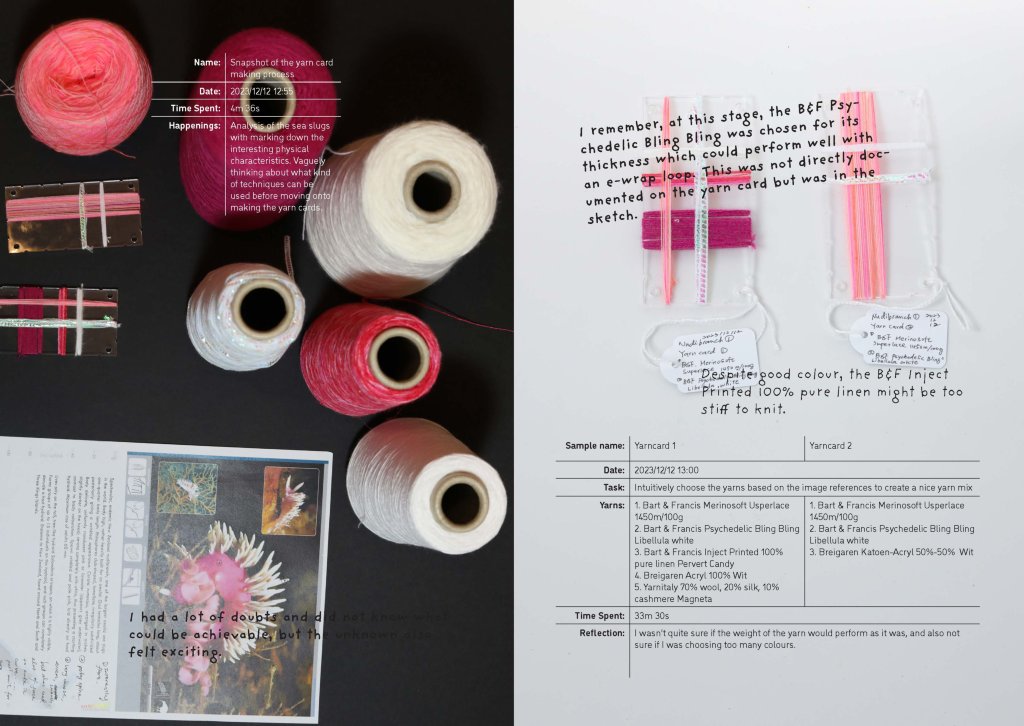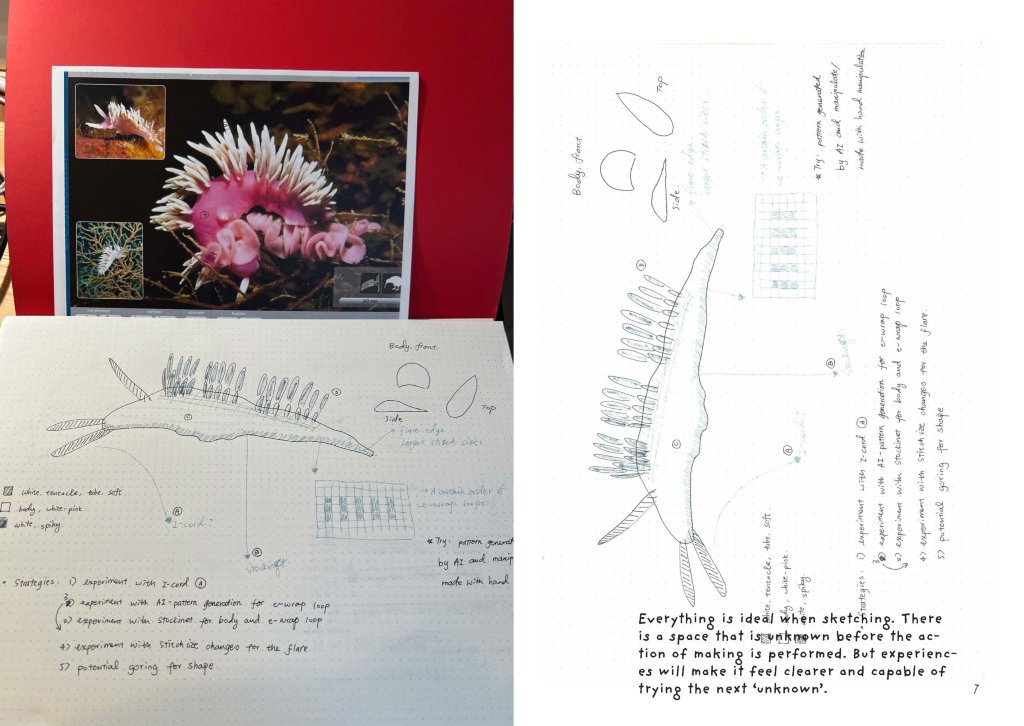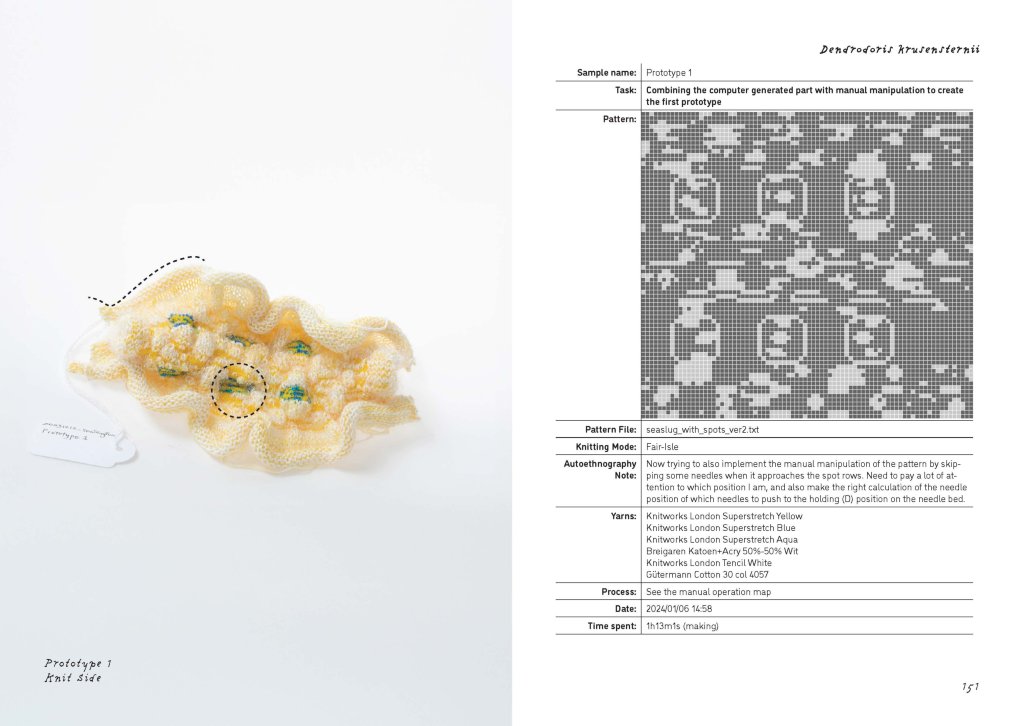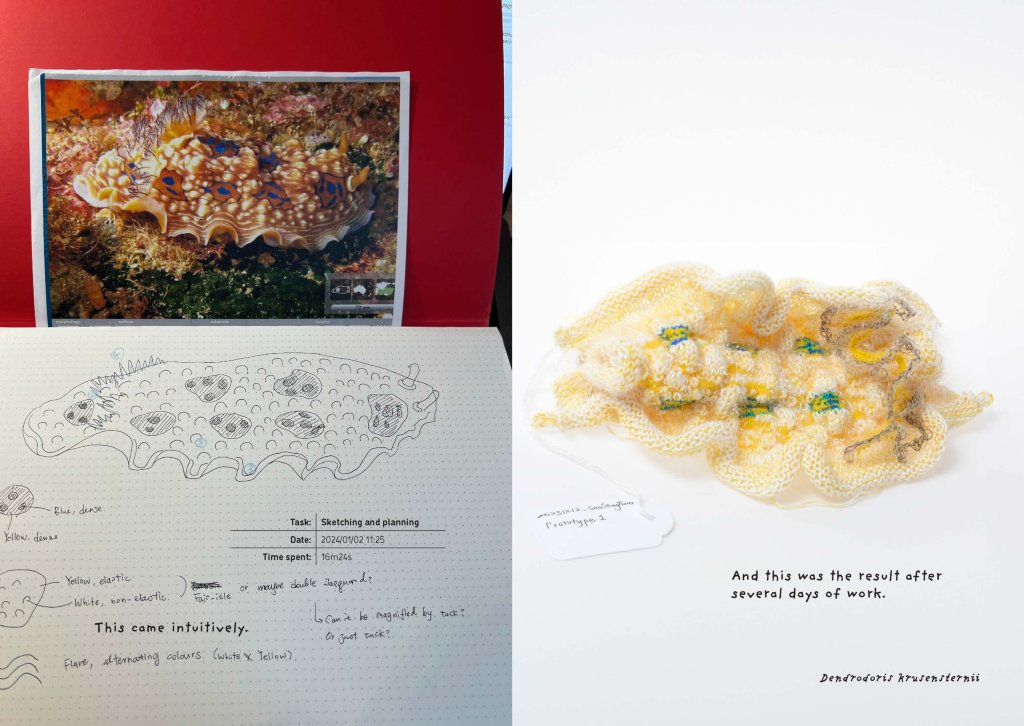Knitting the Sea Slugs – a Demonstration of a Human-AI-Machine-Material Assemblage
Pei-Ying Lin, Kristina Andersen, Wijnand IJsselsteijn
In the framework of more-than-human design, materials and machines are considered more-than-human designers. How do “I” collaborate with materials, machines, and AIs?
HCI research acknowledges the collective process of human-AI-machine assemblage in textile production, in which each has its own agency within the process. Such a framework shifts the perspective of AI as a tool towards AI as a more-than-human designer, requiring a different lens to view it as a more-than-human collective process.

In this project, we adapted a popular textile creative process practised by textile design students across institutions: Starting from visual ideation, doing yarn and simple swatches, and then continuing to more sophisticated swatches, and finally, the final prototype. We chose this approach to centre the perspective from the craftsmanship tradition and explore different technology engagements. Sea slugs were chosen as the creative goal to allow more freedom than a typical knitted wearable garment where more precise calculation is needed for practicalities. Sea slugs Jason mirabilis and Dendrodoris krusensternii from the book ‘Super Sea Slugs – a guide to the sea slugs of New Zealand’ by Richard C. Willan and Niki Davy were chosen for their interesting shapes and attractive colours.
author instinctively. The creative process is recorded through photographs, autoethnography, digital patterns, and an annotated portfolio.

The documentation format was inspired by a multitude of sources from biology research lab journals and annotated portfolios as proposed by Portfolio of Loose Ends, along with auto-ethnography diaries to record cognitive processes, temporalities, reflections, practical information, to digital files that allow the whole choreography of creative knitting to happen.
With this project, we demonstrate how humans, a simple genetic algorithm, a knitting machine, and materials can mutually inform and interact with each other. The booklet and samples also reveal the nuances of the negotiation, collaboration, reflection, and modifications at different levels between the human’s embodied cognitive space, pattern generation, machine control and choreography, and material performances in response to knitting structures.


Share
Contacts
- -
- -Kristina Andersenh.k.g.andersen@tue.nl
- -Wijnand IJsselsteijnW.A.IJsselsteijn@tue.nl



